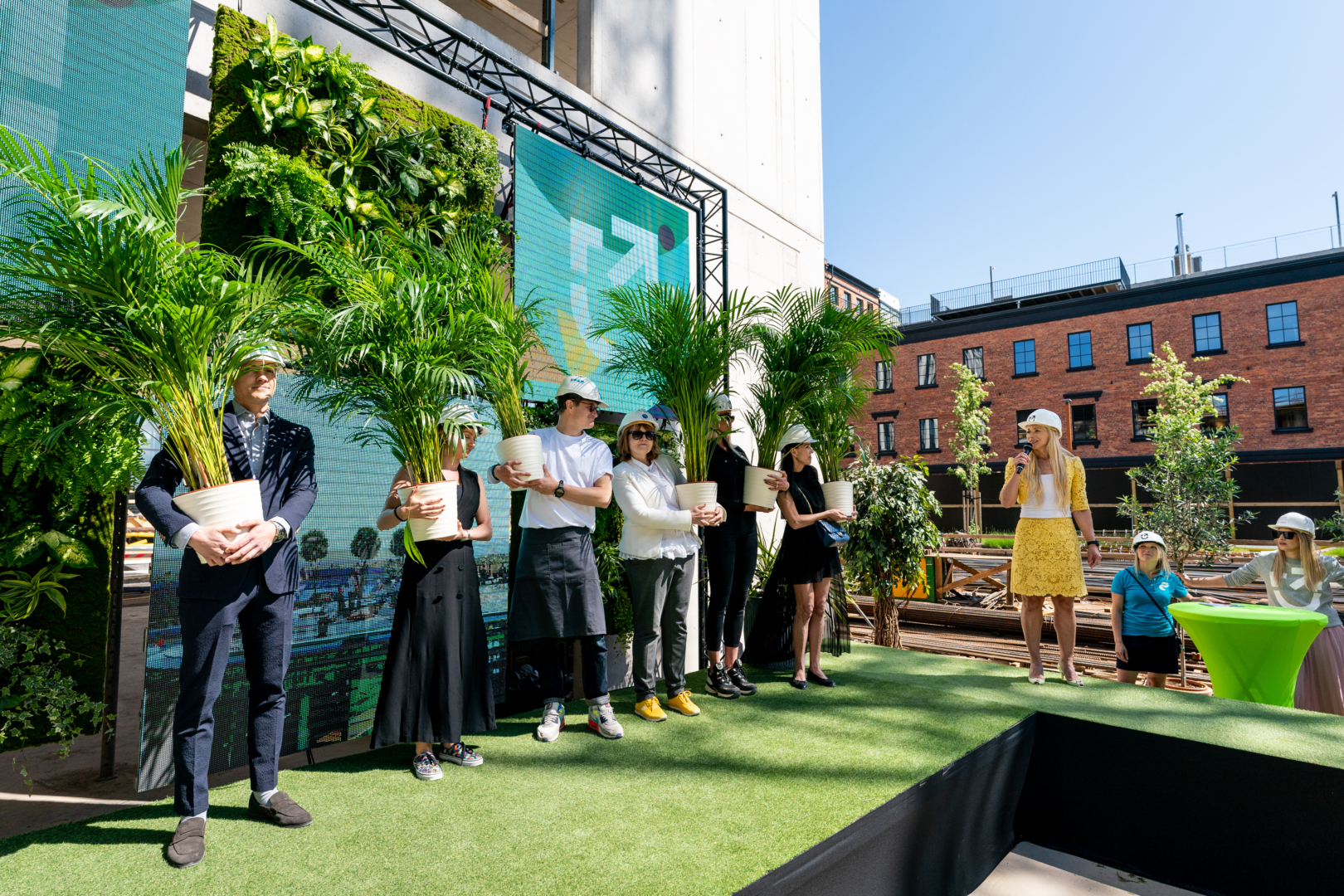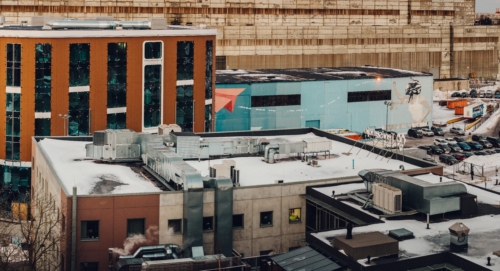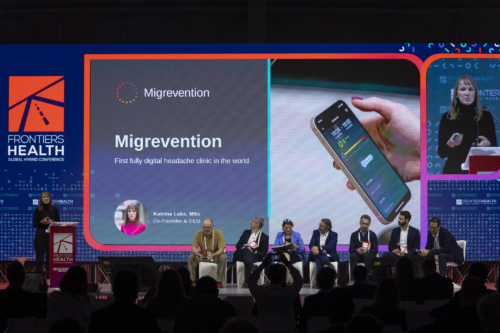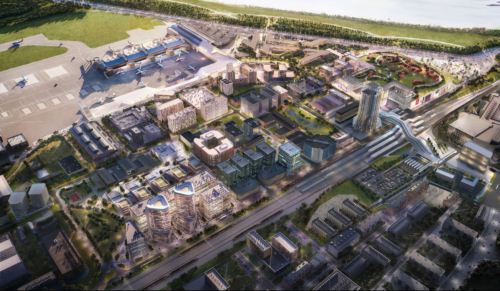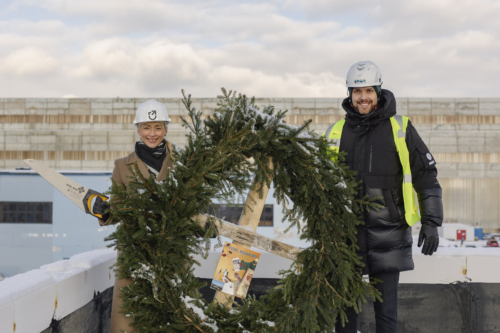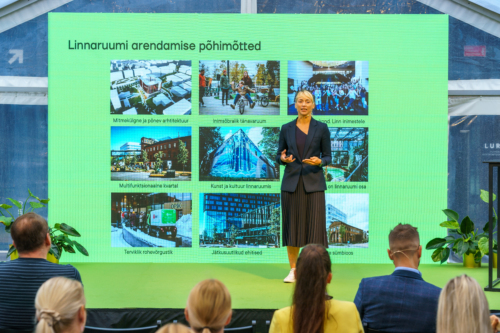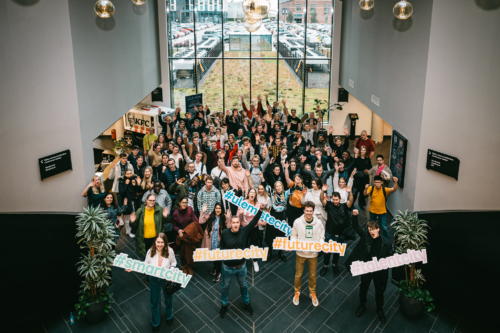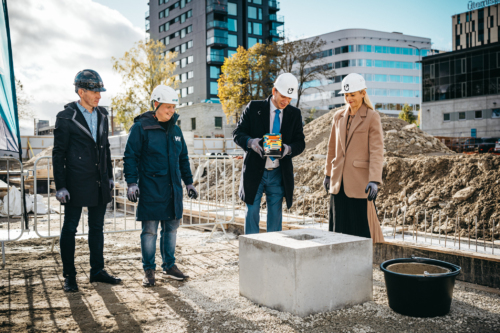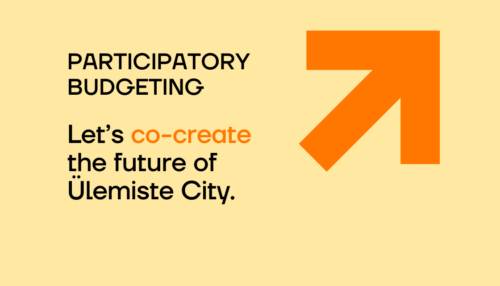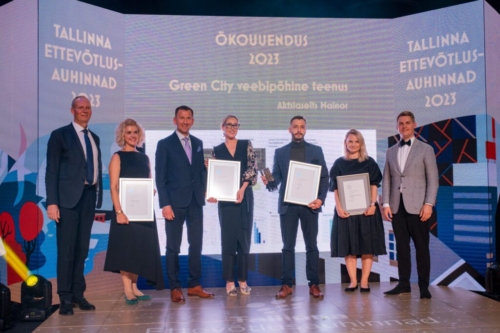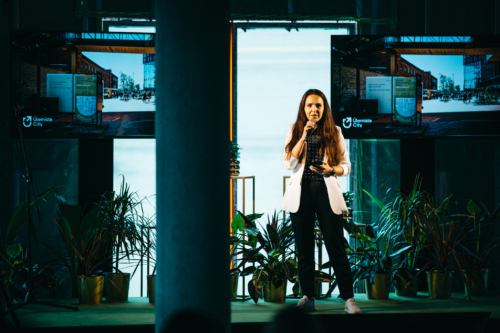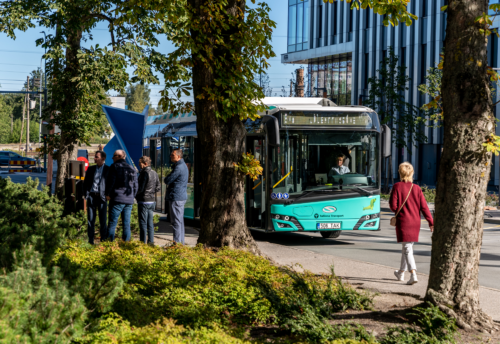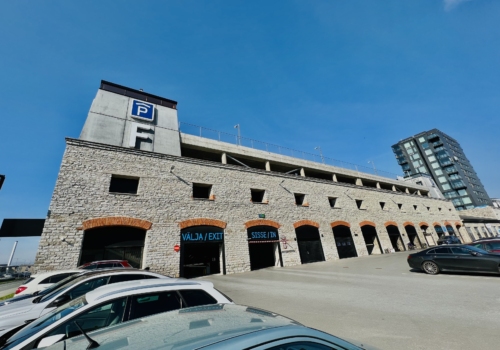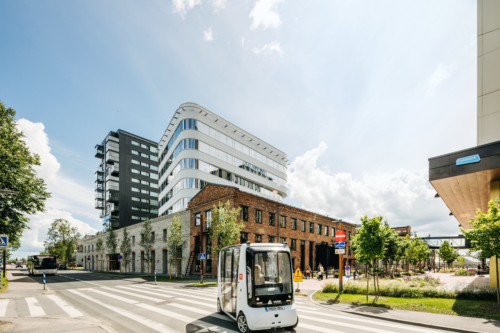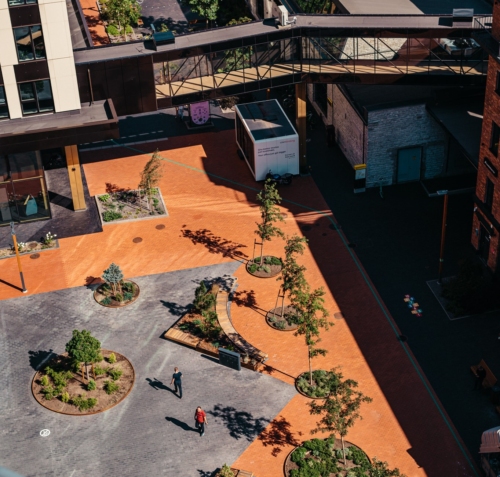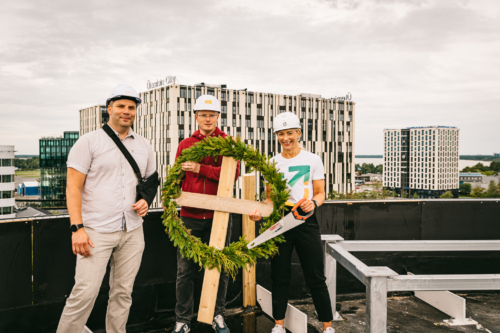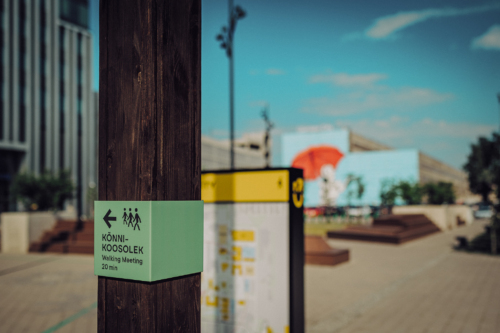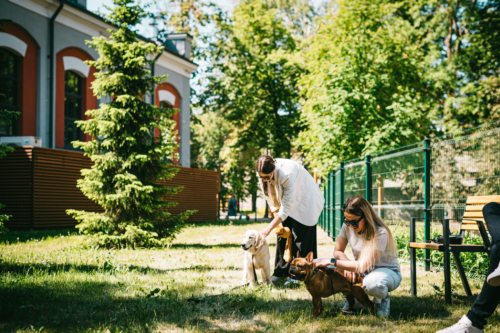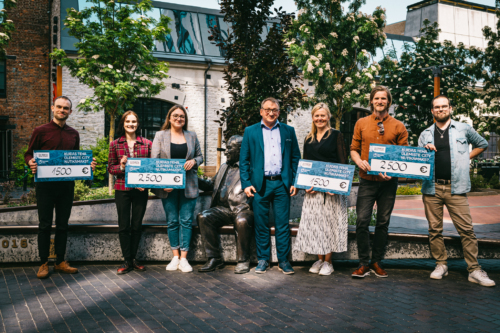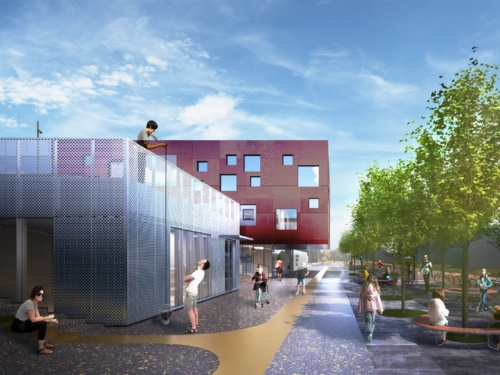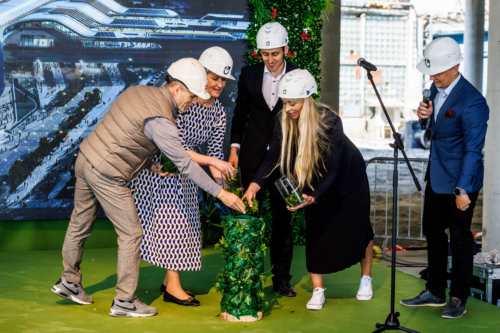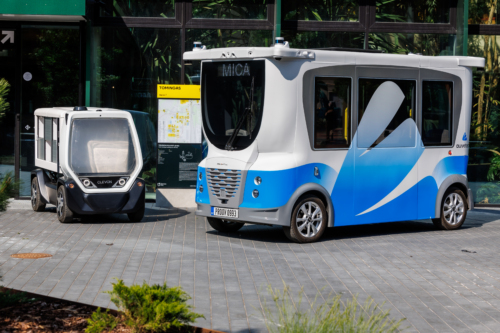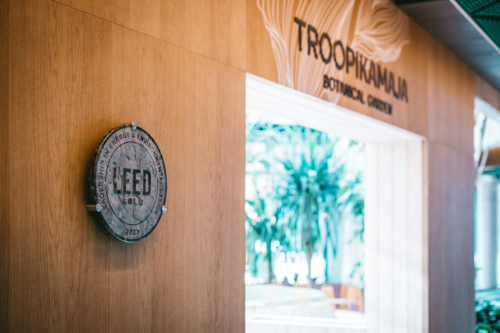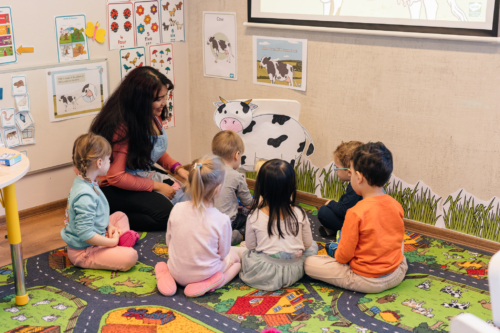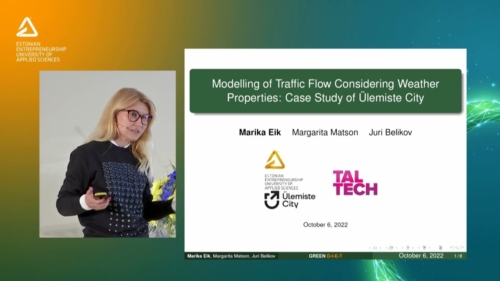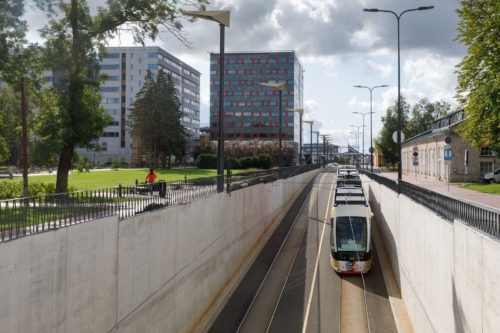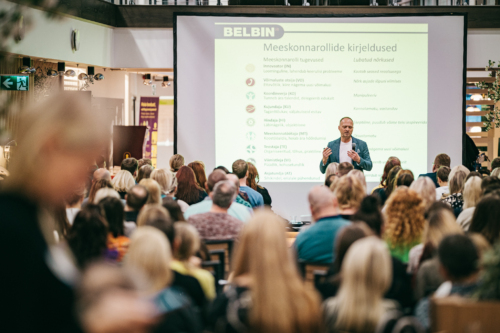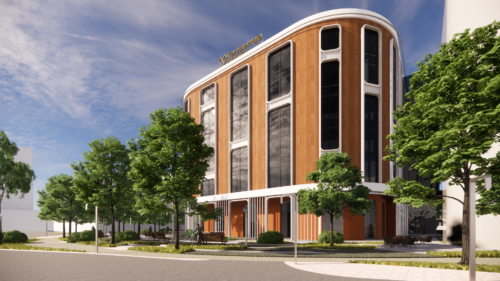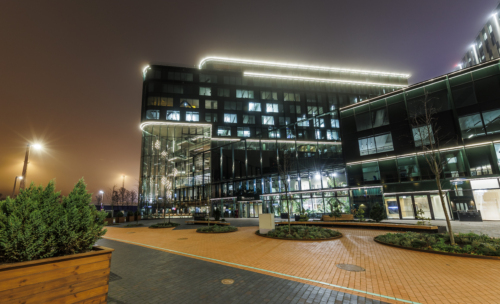Top international companies will move into the Alma Tominga green building
The Alma Tomingas office building, which received its cornerstone in Ülemiste City today, is a uniquely thought-out and talent-oriented working environment, attracting companies with a global reach.
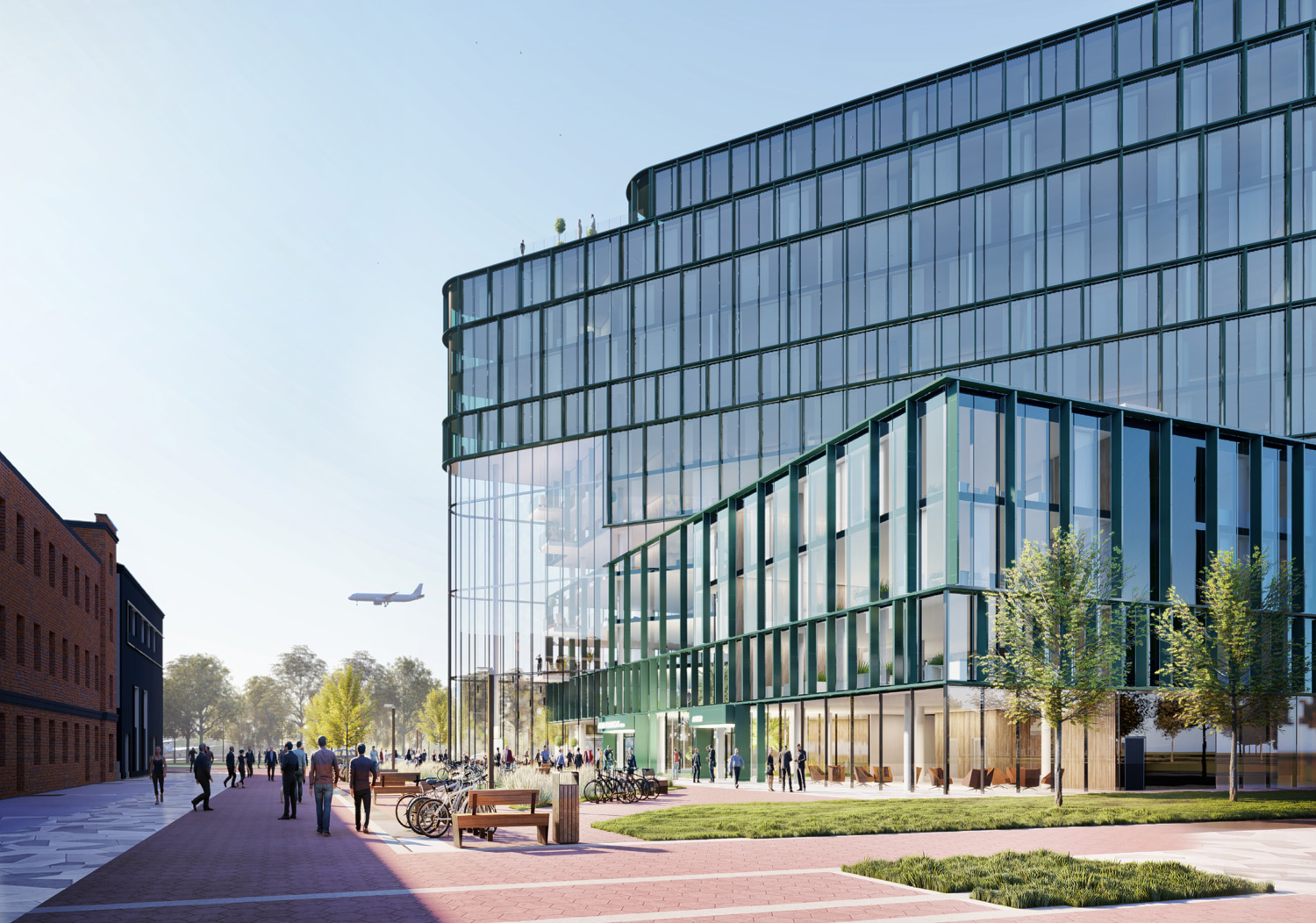
Inspired by the work of Alma Tomingas, Estonia’s first female professor, the green building was created in cooperation with architects, service designers, researchers from the University of Tartu, as well as urban strategists, arborists, indoor climate, LEED, and digital experts, and gRrabbit, a creator of innovation in catering.
‘Many real estate developers hit the brakes during the first wave of the coronavirus pandemic, preferring to wait and see what the future holds. However, we made the bold decision to begin the construction of a building with a completely new concept. It will be one of the most well-thought-out and talent-focused working environments in Estonia and perhaps even the whole of Europe’, said Ursel Velve, Chairman of the Management Board of Mainor Ülemiste AS.
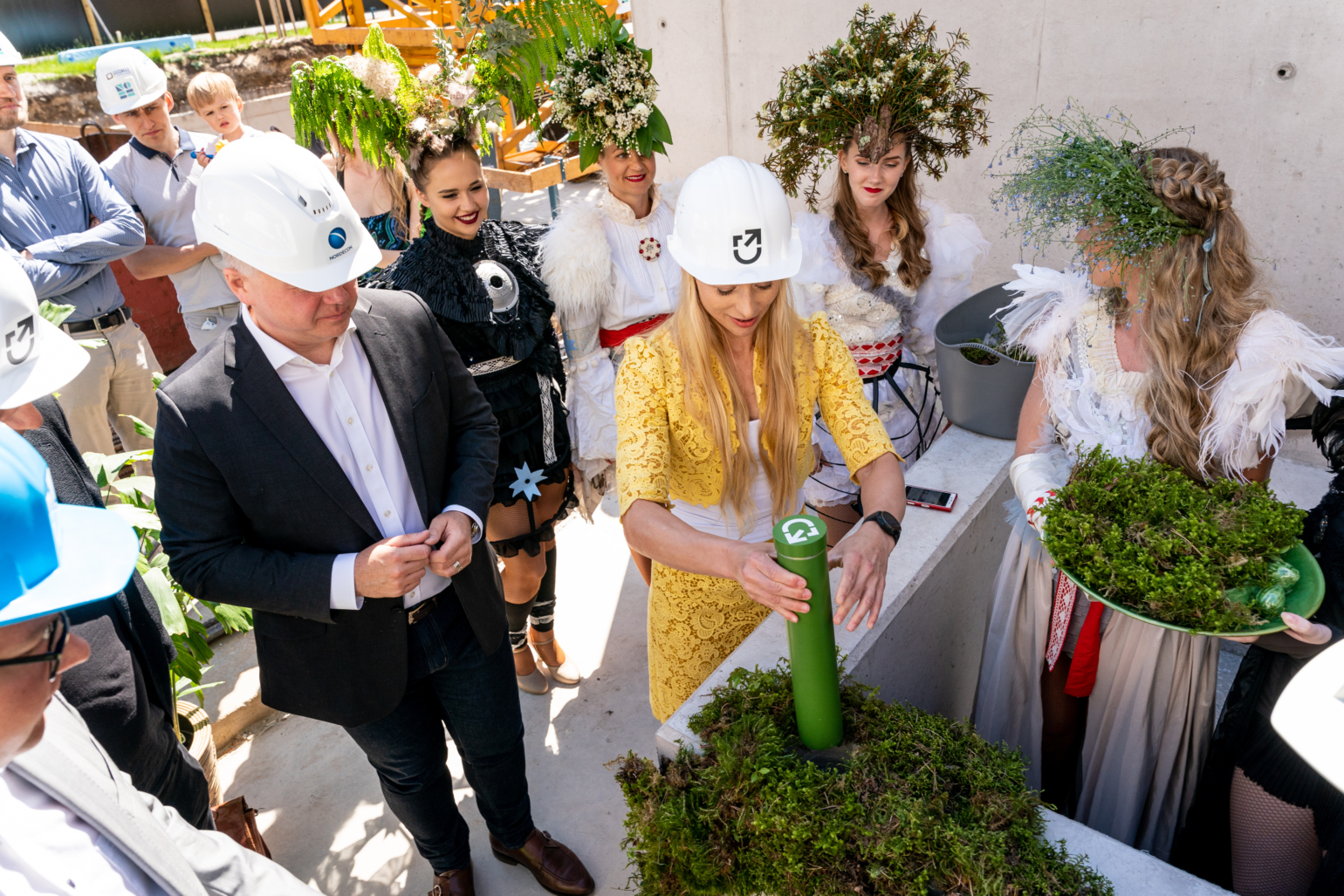
The Alma Tomingas building will be completed by November 2022, representing the office building project with the largest investment (over EUR 30 million) in Ülemiste City.
‘A building is emerging, one that we are creating in cooperation with the architects from the architectural firm PLUSS Architects from start to finish and from the inside out – based on the needs of our current and future talents. Awaiting them is a green environment, with the boundary between indoor and outdoor space being shifted by a large indoor atrium with balconies, a four-metre waterfall and an interactive forest, where it will be nice to meet with colleagues or let your imagination soar alone in the tropical microclimate. The innovation and greenery being created is a step taken in the name of better employee health’, explained Velve.
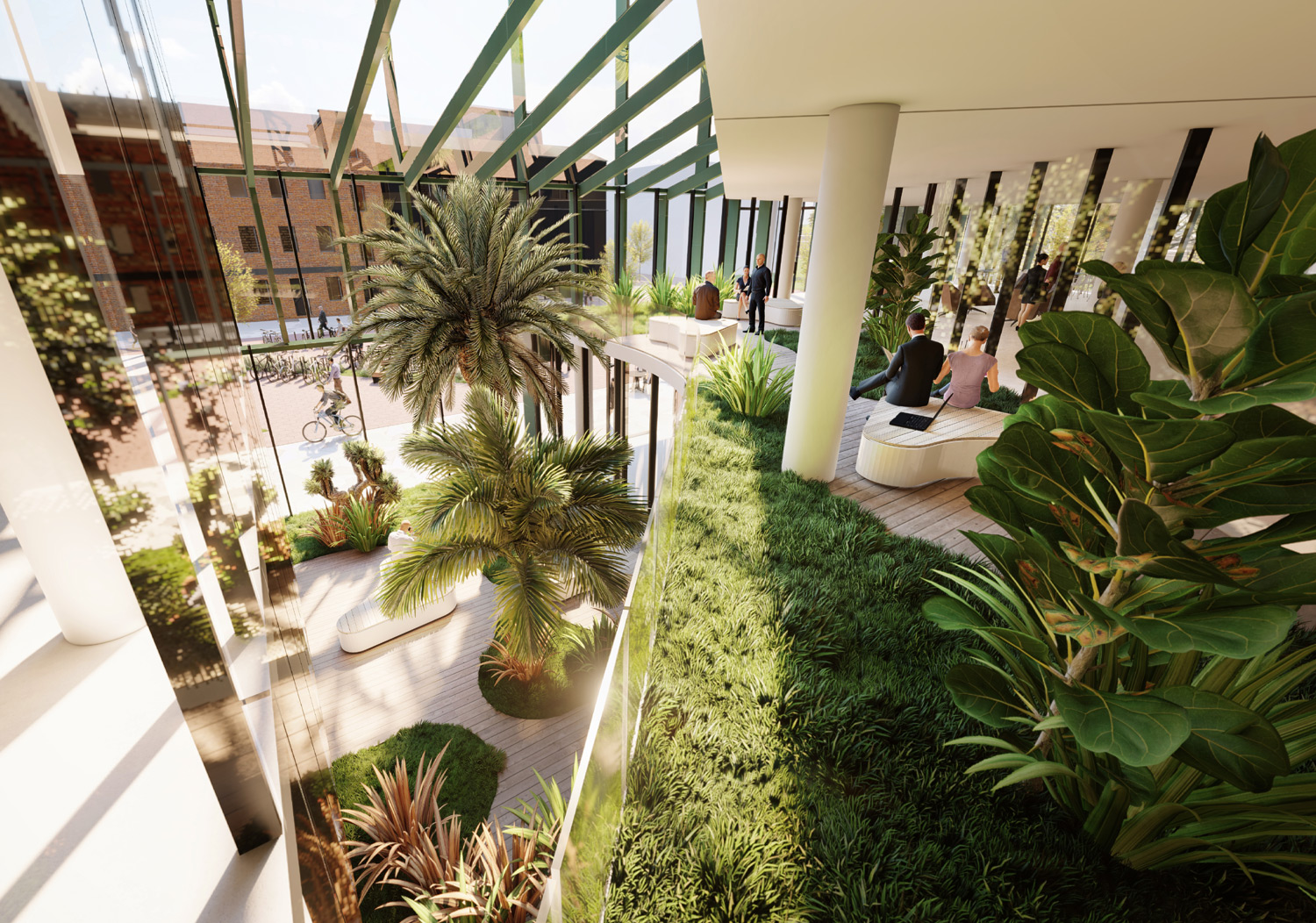
‘With the completion of the Alma Tomingas building, we will have once again created value and attractiveness for the Suur-Ülemiste of the future and the realisation of this vision, which in the future combines Estonia’s most important transport hub, the best shopping centre in the Baltics, and the largest and most meaningful business campus in the Nordic countries. Therefore, Suur-Ülemiste – which is likely to become one of Tallinn’s most important export items through business and conventional tourism – deserves only the best. The best content and the best form – the building will definitely meet these criteria’, said Guido Pärnits, Chairman of the Supervisory Board of Mainor Group.
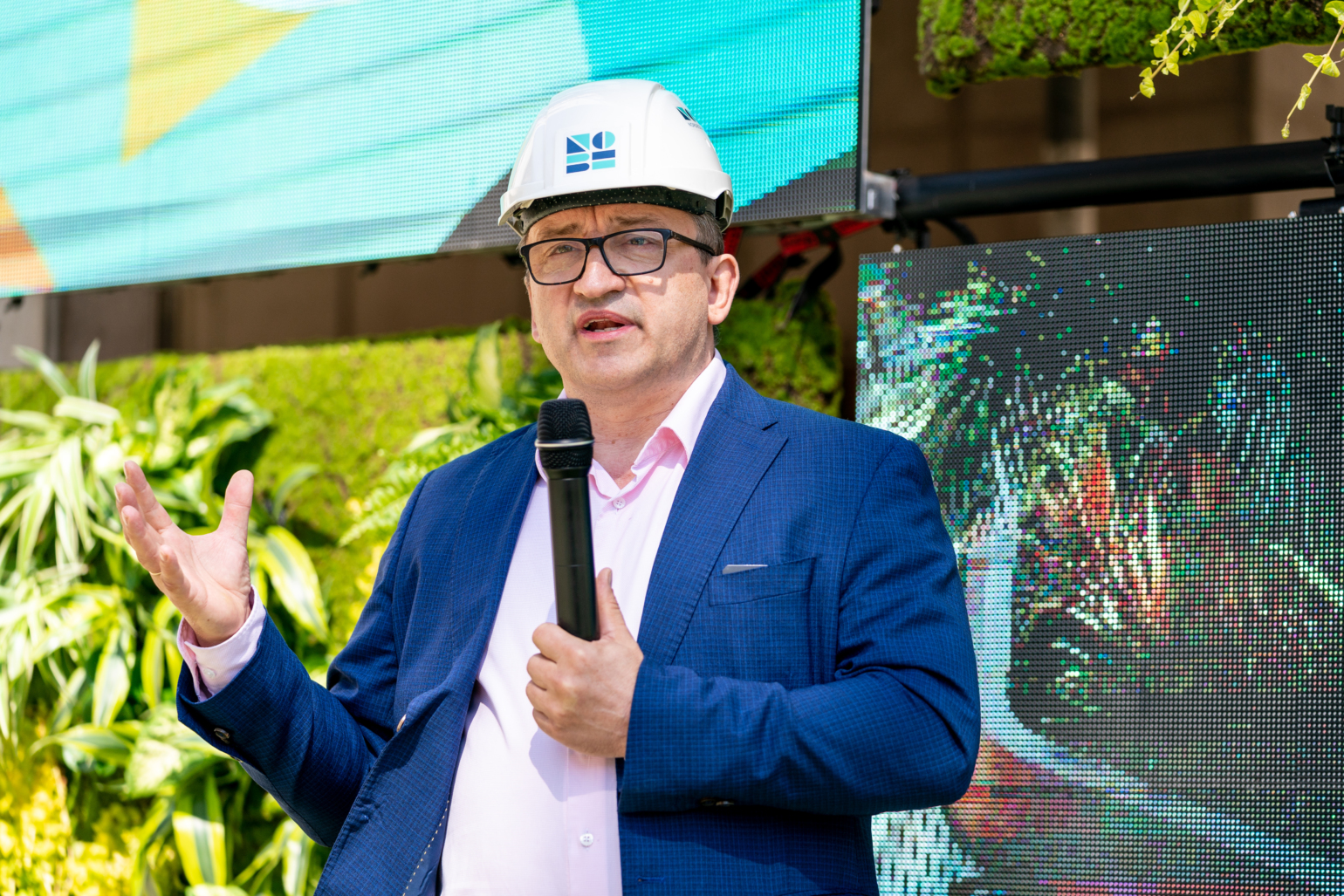
The 11-storey green building being built in the immediate vicinity of Tallinn Airport will meet the Leadership in Energy and Environmental Design (LEED®) Gold standard, the installation of solar panels and the first district heating and cooling system in the campus will take place, the switchover to which will save 1500 trees worth of CO2 per year in the future.
Fujitsu and Skeleton: a creative working environment is the key to success
The future tenants of the Alma Tomingas building include brands with global reach and recognition, led by technology giant Fujitsu and Skeleton, which is aspiring to be the next unicorn. Both were fascinated primarily by the well-designed nature and ambition of the project.
Skeleton Technologies has risen to become the largest manufacturer of supercapacitors in Europe, using technology that was developed in Estonia to provide energy to the products of the world’s top companies. The growth of the company is clearly reflected in the fact that it will occupy ten times more office space in the Alma Tomingas building than it did when it first moved to Ülemiste City in 2018. As a pioneer in the field, the focus is on recruiting the best talent from Estonia and elsewhere, with the ability to offer the best working environment being of critical importance.
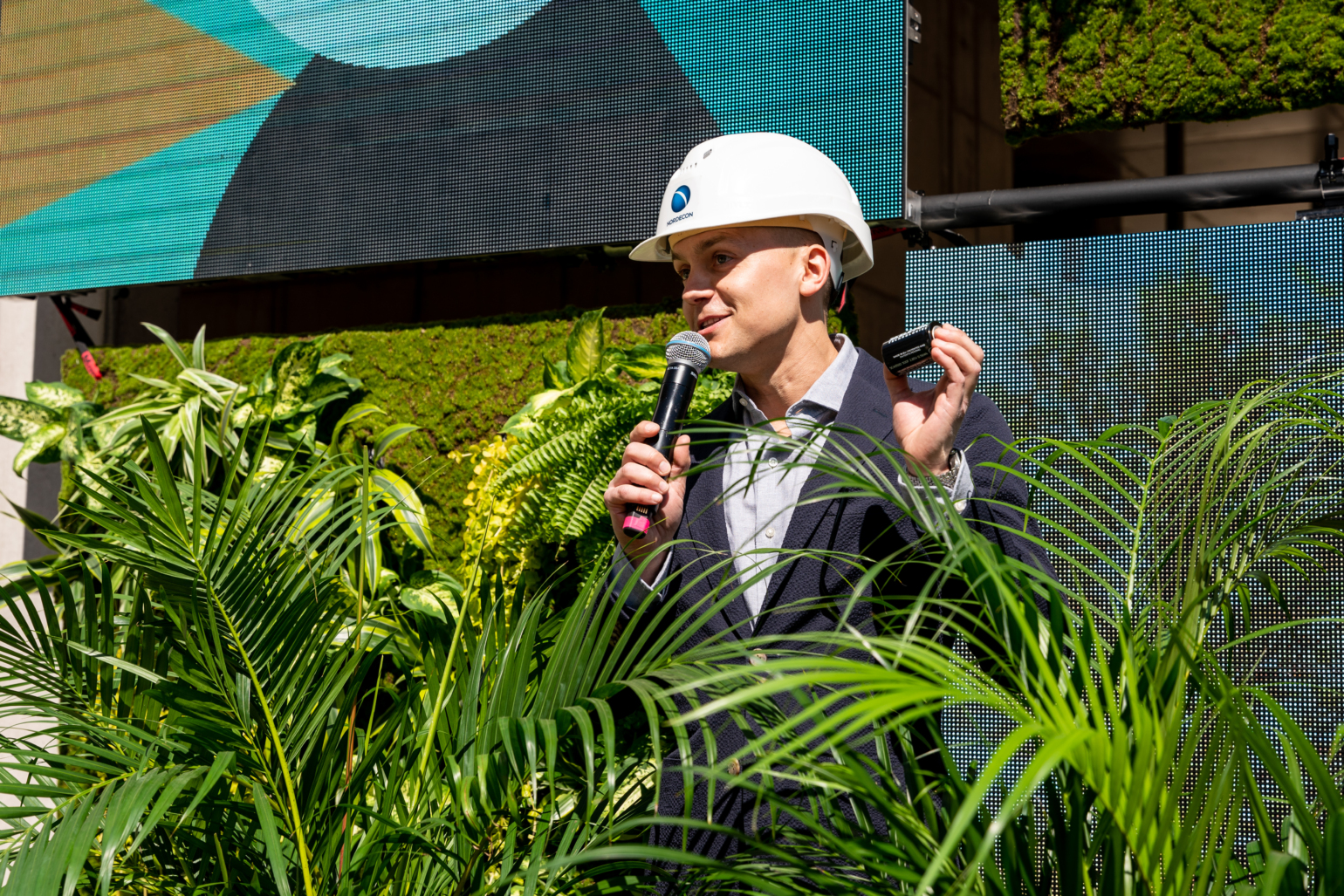
‘The decision to move into the Alma Tomingas building underlines our continued commitment to providing employees with the healthiest and most creative working environment possible. We understand that if we fail to take their well-being into consideration, the company will not see any breakthrough innovations. The move to a new office – where the most efficient standards have been created to reduce energy demand and CO2 emissions and to conserve natural resources – will help contribute to bringing our plans for growth to life’, said Nele Leht, Chief of Staff at Skeleton Technologies.
Merilin Mõttus, Facilities Manager at Fujitsu Estonia, stated that the modernisation of offices and workplaces is constantly being carried out, but the decision to move to Ülemiste marks the realisation of many good ideas, which will provide momentum to environmentally friendly thinking and practices.
‘Fujitsu’s mission is to make the world more sustainable by building trust in society through innovation. We work on a global level with technologies that create environments that serve as a great place for people to live and work’, said Mõttus.
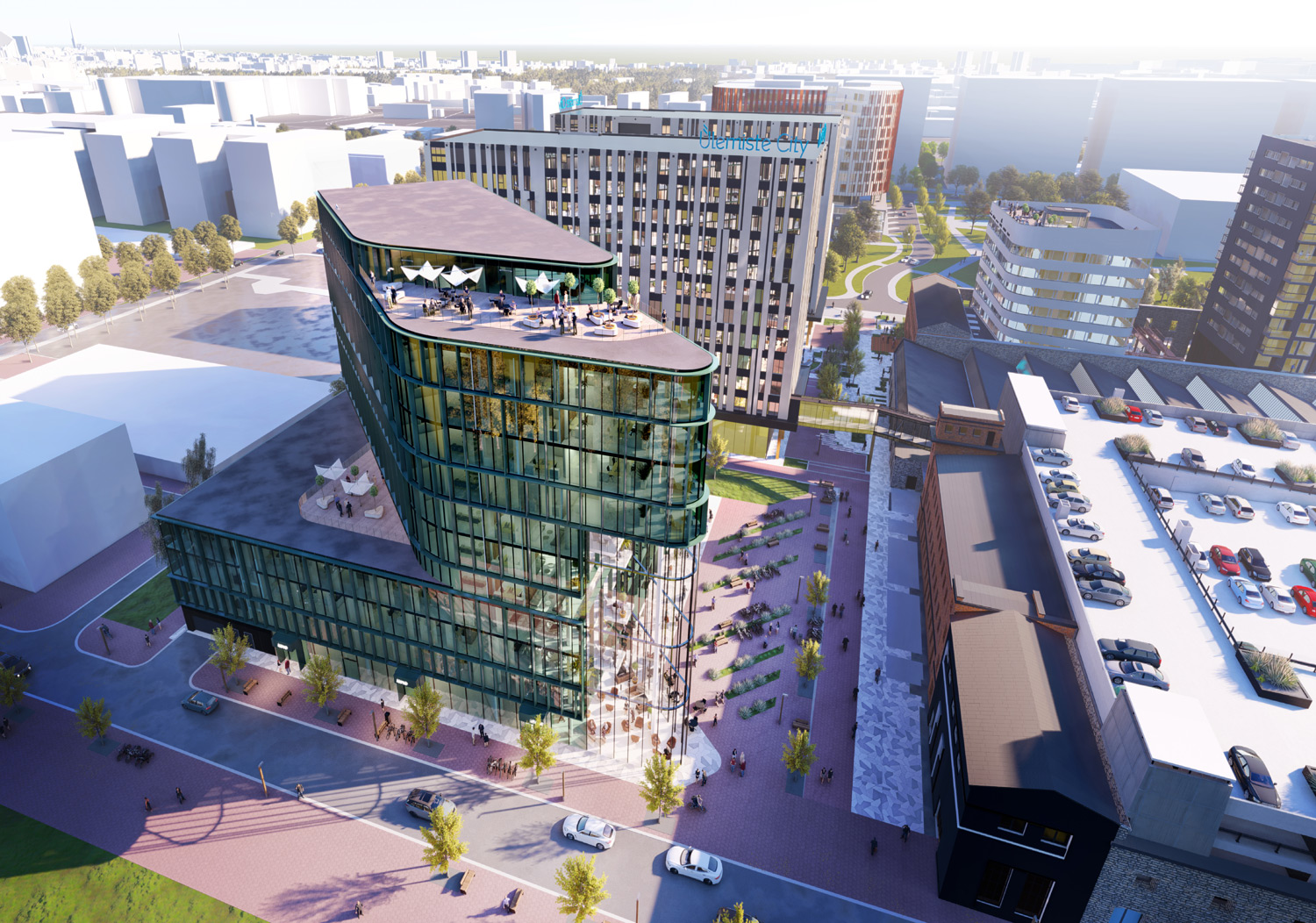
She gave examples of the approach: ‘We have created smart spaces where you can control your movements and activities with facial or palm vein detection. Also worth mentioning are solutions for detecting and warning of employee fatigue, measuring room occupancy and workload, as well as monitoring the condition of road surfaces and the spread of invasive plant species’.
The author and chief designer of the idea for the building with more than 20,000 square metres is the architectural firm PLUSS Architects; the builders are NOBE and the Nordecon consortium.
